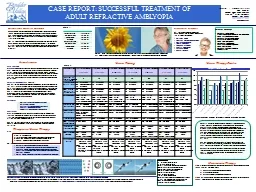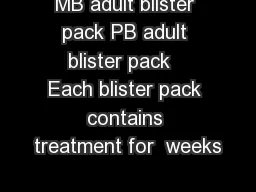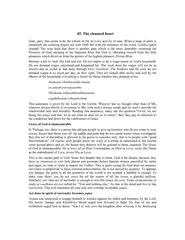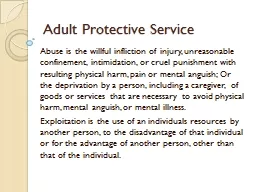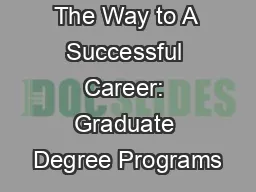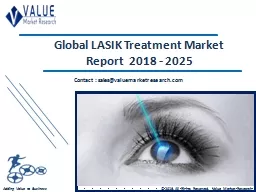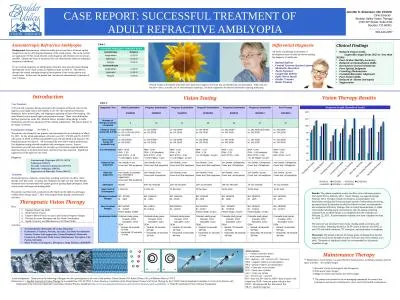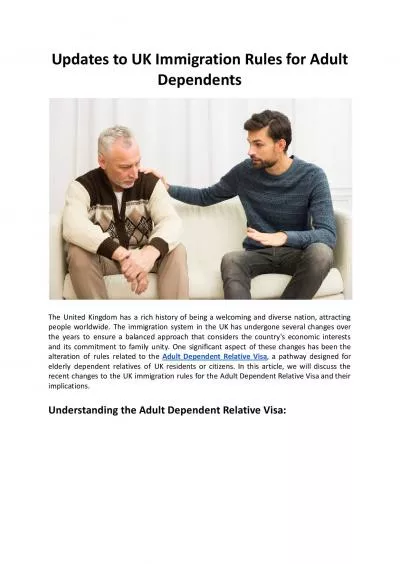PPT-CASE REPORT: SUCCESSFUL TREATMENT OF ADULT REFRA
Author : luanne-stotts | Published Date : 2017-06-04
Jennifer S Simonson OD FCOVD Clinic Director Boulder Valley Vision Therapy 1790 30 th Street Suite 311 Boulder CO 80301 wwwbouldervtcom 3034432257 A 35yearold
Presentation Embed Code
Download Presentation
Download Presentation The PPT/PDF document "CASE REPORT: SUCCESSFUL TREATMENT OF ..." is the property of its rightful owner. Permission is granted to download and print the materials on this website for personal, non-commercial use only, and to display it on your personal computer provided you do not modify the materials and that you retain all copyright notices contained in the materials. By downloading content from our website, you accept the terms of this agreement.
CASE REPORT: SUCCESSFUL TREATMENT OF ADULT REFRA: Transcript
Download Rules Of Document
"CASE REPORT: SUCCESSFUL TREATMENT OF ADULT REFRA"The content belongs to its owner. You may download and print it for personal use, without modification, and keep all copyright notices. By downloading, you agree to these terms.
Related Documents

